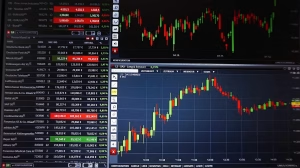Trading Made Easy – In today’s fast-paced financial markets, navigating investments can appear daunting, especially for beginners. However, with the right tools and knowledge, trading can be made easy. One of the most effective ways to simplify your trading experience is by utilizing market signals. In this comprehensive guide, we will explore how to approach trading using market signals for smart investing strategies.
Trading Made Easy: What Are Market Signals?
Market signals are indicators that suggest when to buy or sell an asset. These signals can arise from various sources, including technical analysis, fundamental analysis, and even economic events. Understanding market signals is essential for traders aiming to make informed decisions.

Types of Market Signals
- Technical Signals: Based on price patterns and trading volumes, these signals help traders identify trends and potential reversal points. Common technical indicators include:
- Moving Averages
- Relative Strength Index (RSI)
- Bollinger Bands
- Fundamental Signals: These signals derive from economic data and financial news. They can include earnings reports, economic indicators, or shifts in government policies that might affect market conditions.
- Sentiment Signals: Market sentiment reflects the overall mood of investors towards a particular asset. This can be gauged through market surveys, the volatility index, or social media trends.
For more information on technical indicators, check out Investopedia’s Comprehensive Guide to Technical Analysis.

How to Use Market Signals for Smart Investing
Using market signals effectively requires a blend of understanding, analysis, and strategy. Here are steps to consider when utilizing market signals for investing:
1. Develop a Trading Plan
Having a well-structured trading plan is crucial. Determine your risk tolerance, investment goals, and trading style. Your trading plan should incorporate how you will use market signals to make informed decisions.
2. Choose the Right Tools
Several platforms provide market signals, including trading platforms and mobile apps. Look for tools that cater to your needs and offer real-time updates. Some popular platforms include:
3. Analyze Market Signals
Once you have access to market signals, take the time to analyze them. Look for patterns and trends that could indicate the right time to buy or sell. Technical analysis tools can help you decipher complex data.
4. Stay Informed
Keep abreast of economic news and updates that could influence your investments. Websites like Yahoo Finance and Bloomberg provide essential financial news and data that can impact market signals.
5. Test Your Strategies
Before committing real capital, test your trading strategies on a demo account. This approach allows you to practice interpreting market signals without financial risk.

Common Mistakes to Avoid
While market signals can enhance your trading strategy, beginners often make mistakes. Here are some pitfalls to avoid:
- Ignoring Market Context: Market signals should not be the sole basis for a trading decision. Always consider market context, including economic factors and news events.
- Overtrading: In the quest for profits, many traders succumb to overtrading based on minor signals. This can lead to significant losses.
- Neglecting Risk Management: Always set stop-loss orders to protect your investments. Market signals may not guarantee success; therefore, it’s crucial to mitigate risks.

Helpful Resources for Traders
- Books: “Technical Analysis of the Financial Markets” by John Murphy is a must-read for understanding market signals.
- Webinars: Check out resources like Investopedia Academy for online courses on trading strategies.
- Communities: Joining forums like Elite Trader can provide insights from experienced traders.

Trading Made Easy
Conclusion
Trading made easy is possible through the effective use of market signals. By understanding the types of signals, utilizing the right tools, and avoiding common pitfalls, you can develop a sound trading strategy. Remember, the key to smart investing lies in consistent learning and adaptation.
Start applying these insights today, and transform your trading experience!








